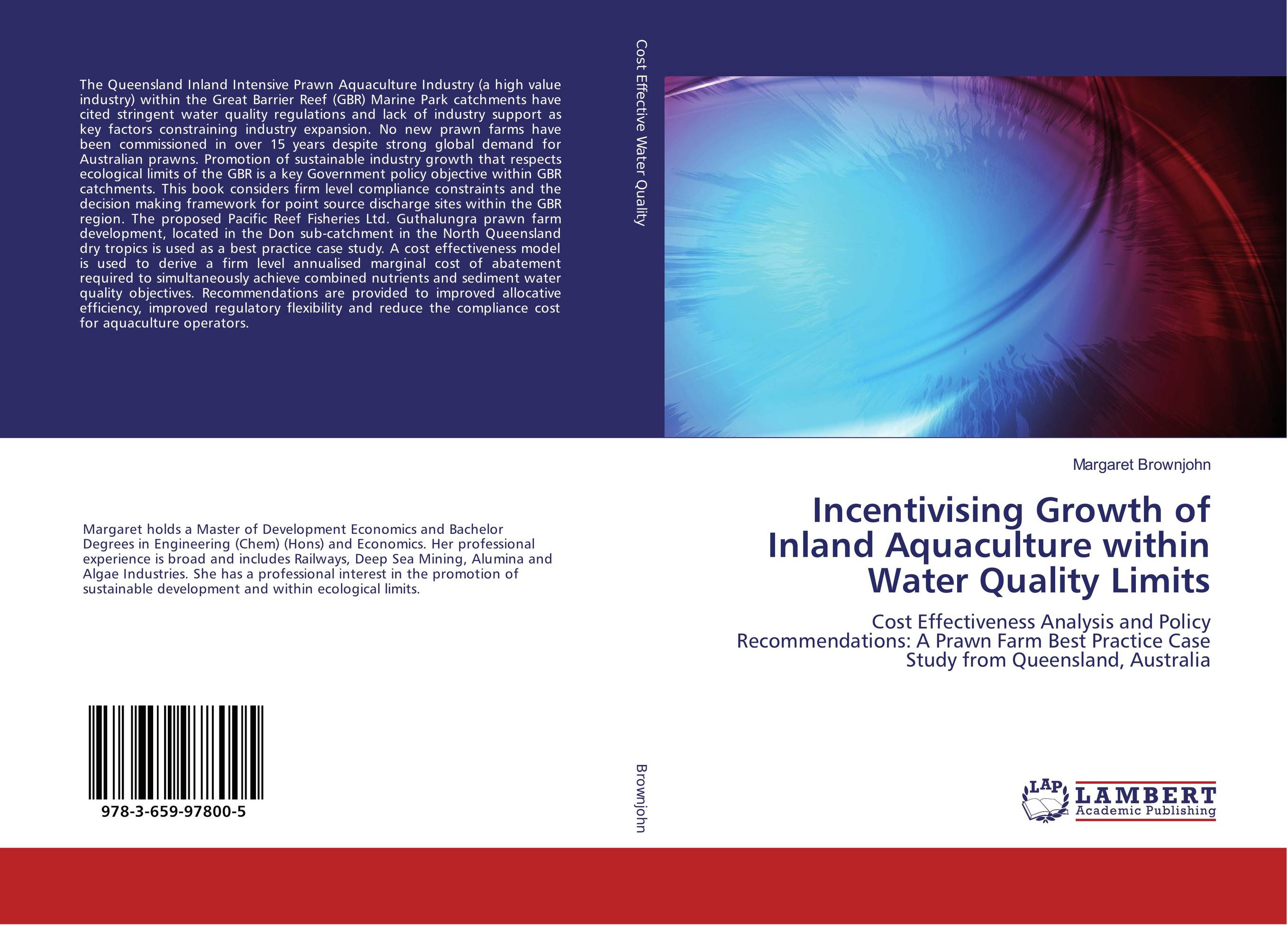| Поиск по каталогу |
|
(строгое соответствие)
|
- Профессиональная
- Научно-популярная
- Художественная
- Публицистика
- Детская
- Искусство
- Хобби, семья, дом
- Спорт
- Путеводители
- Блокноты, тетради, открытки
Incentivising Growth of Inland Aquaculture within Water Quality Limits. Cost Effectiveness Analysis and Policy Recommendations: A Prawn Farm Best Practice Case Study from Queensland, Australia

В наличии
| Местонахождение: Алматы | Состояние экземпляра: новый |

Бумажная
версия
версия
Автор: Margaret Brownjohn
ISBN: 9783659978005
Год издания: 2016
Формат книги: 60×90/16 (145×215 мм)
Количество страниц: 172
Издательство: LAP LAMBERT Academic Publishing
Цена: 39286 тг
Положить в корзину
| Способы доставки в город Алматы * комплектация (срок до отгрузки) не более 2 рабочих дней |
| Самовывоз из города Алматы (пункты самовывоза партнёра CDEK) |
| Курьерская доставка CDEK из города Москва |
| Доставка Почтой России из города Москва |
Аннотация: The Queensland Inland Intensive Prawn Aquaculture Industry (a high value industry) within the Great Barrier Reef (GBR) Marine Park catchments have cited stringent water quality regulations and lack of industry support as key factors constraining industry expansion. No new prawn farms have been commissioned in over 15 years despite strong global demand for Australian prawns. Promotion of sustainable industry growth that respects ecological limits of the GBR is a key Government policy objective within GBR catchments. This book considers firm level compliance constraints and the decision making framework for point source discharge sites within the GBR region. The proposed Pacific Reef Fisheries Ltd. Guthalungra prawn farm development, located in the Don sub-catchment in the North Queensland dry tropics is used as a best practice case study. A cost effectiveness model is used to derive a firm level annualised marginal cost of abatement required to simultaneously achieve combined nutrients and sediment water quality objectives. Recommendations are provided to improved allocative efficiency, improved regulatory flexibility and reduce the compliance cost for aquaculture operators.
Ключевые слова: Aquaculture, Cost effective Analysis, ecological economics, Economic growth, Environmental Economics, Environmental Regulation, Government policy, pollution control, Queensland, sustainability, Water Quality, Firm Behaviour, Great Barrier Reef Marine Park, Nutrient Trading Scheme, Pollution Policy, Prawns (shrimps), Zero Net Discharge



